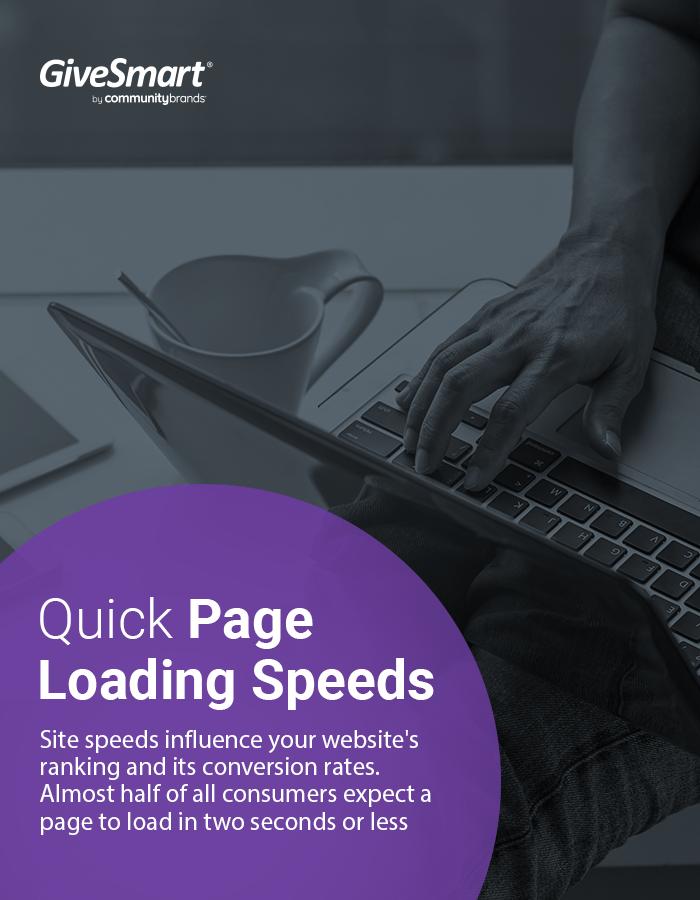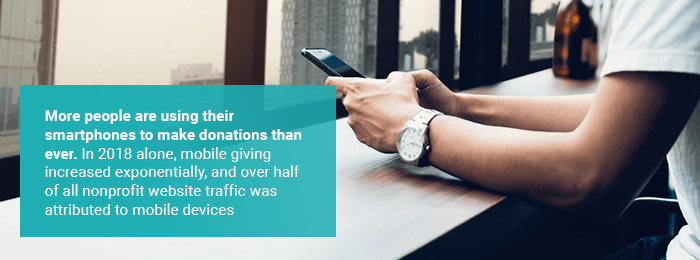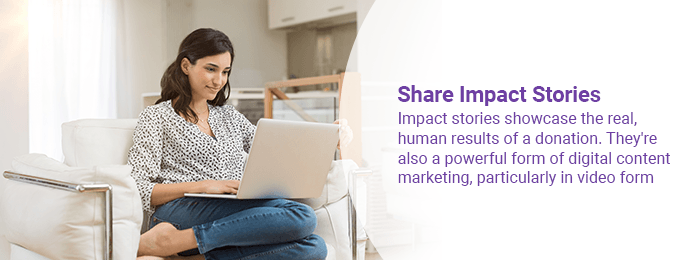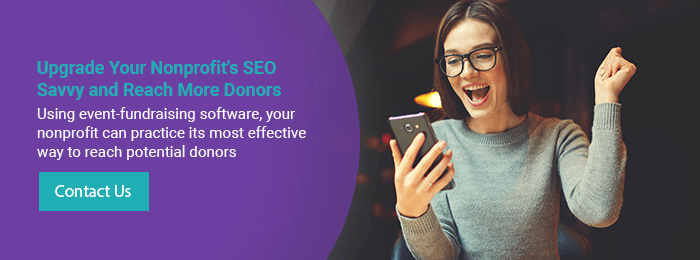Sep 6, 2019
Marketing strategies to bring donors to your online donation page
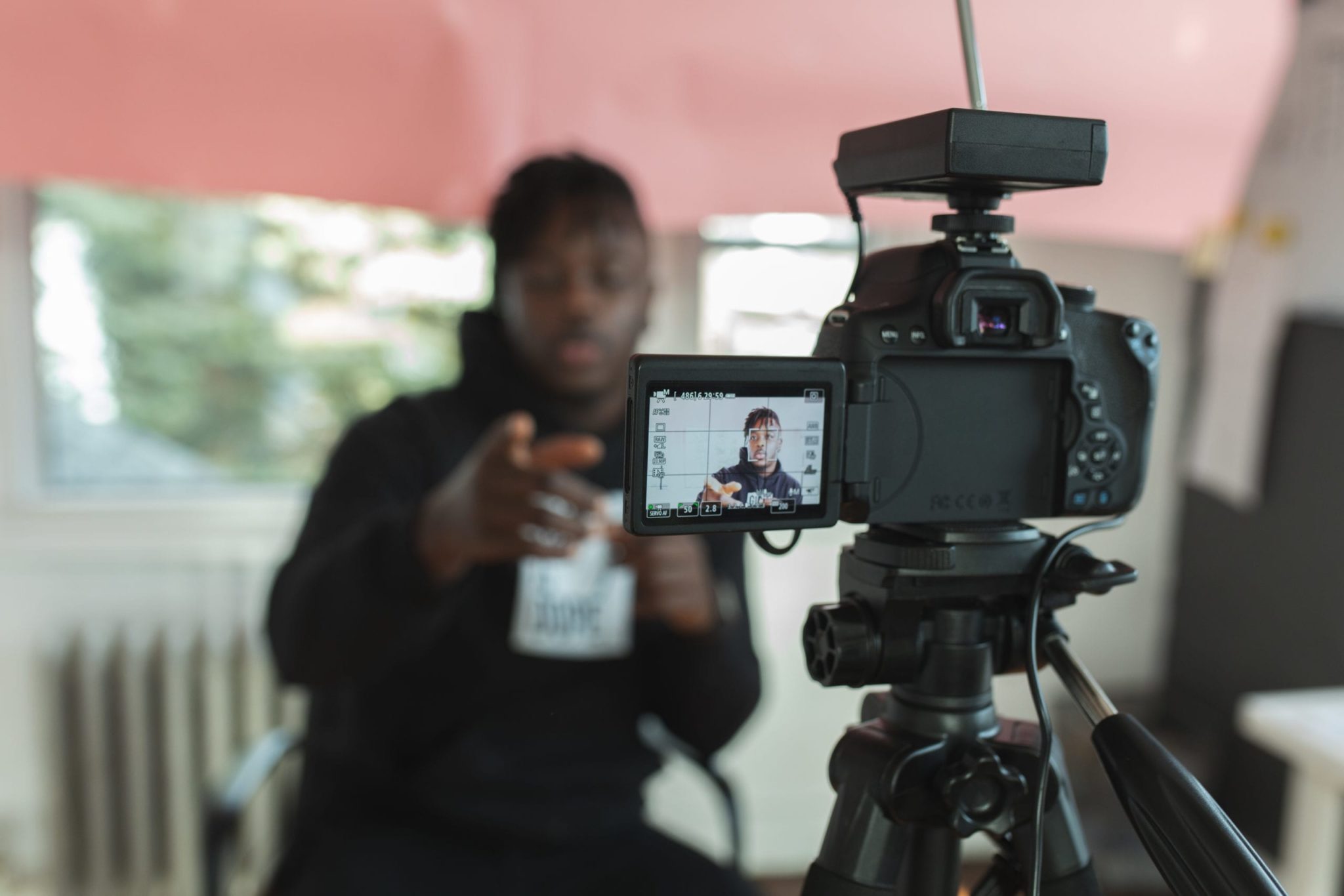
Digital marketing strategies for nonprofits are all the rage — and for good reason. Online donations are one of the fastest-growing fundraising segments for nonprofits.
Today, we’re deciphering donation page marketing tips and techniques to drive organic traffic to your fundraising pages. This guide is relevant to any and all staff members in a nonprofit’s development office, but especially senior administrators aiming to make the most of their current online donation forms.
How an Online Donations Page Can Impact Your Fundraising
Online donation forms are crucial to include on feature pages across your website. These forms drive traffic and attention to your key campaigns. They also double as a leading contemporary fundraising strategy, one with evergreen impact for your organization.
1. Lets You Target Established and New Donor Demographics
Donation pages are universally accessible. That means your fundraisers are no longer limited by immediate geographic reach, or in many cases contingent on the participation of established donor segments.
Instead, optimized donation pages can be tailored to reach fresh target demographics, or groups of people primed to engage in your causes. Research into online donor behaviors already reveals many of these demographic leanings waiting to be harnessed:
- Female donors are more likely to make a donation based on social media marketing.
- Male donors are more likely to give because of email solicitations.
- Millennials and Gen Xers are most likely to donate online after seeing a social media post.
- Baby boomers are most likely to give online after receiving a direct donations email.
2. Are Easy to Create and Maintain
You can easily integrate online fundraising tools into your existing website using fundraising software. Most fundraising software includes templates you customize to fit your campaigns, then immediately publish to spark donor funds.
Once live, these online forms become links you can include within social media posts, email campaigns, listserves and more. The most user-friendly software will even integrate with your email marketing tools or other online marketing platforms. That way, if someone donates online, their information immediately inputs into your database.
3. Elevates Your Omnichannel Experience
Omnichannel digital marketing harmonizes all your online marketing efforts to improve audience engagement and retention.
Also known as a cross-channel content strategy, nonprofits can use campaign donation pages to weave cohesion into their online communications. Rather than manage separate donation platforms on each digital platform, you can instead share and link one dynamic form.
This clarity and cohesion can even boost your brand reputation, elevating your sense of professionalism and organization to prospective donors.
4. Brings in More Donations
Simply put, optimizing your online donation pages draws more eyes, ears and hearts to your causes — which in turn, draws in more funds. This formula of converting site visitors into donors is known as your conversion rate.
Most organizations have a digital conversion rate of around 2%. However, top organizations across industries boast conversion rates of 10 to 11%, meaning one out of every ten people who visit their sites completes a sales or donation transaction. Those are seriously impressive online marketing figures, ones harnessed by better managed online donation pages.
How to Optimize Your Online Donations Page
Drive more traffic to your online donation pages with these top search engine optimization (SEO) strategies, straight from some of today’s top digital marketing aficionados.
1. Prioritize the Donation Button
First things first — does your nonprofit’s website include a donation call-to-action (CTA) button? These are icons that, when clicked, redirect a user straight to your online donation form. CTA buttons should be centrally positioned, clear, clutter-free and — most importantly — located on several strategic web pages.
What does a good donation button look like?
- Defined shape and border: Buttons work best when they’re shaped as rectangles, with text centered within.
- Contrasting colors: Buttons are typically filled in. Their colors should contrast with that of their background — that is, the colors or images of the web page they’re placed over.
- Eye-drawing location: Buttons should be located in logical and effective places, ideally in spots that naturally draw audience eyes after they land on a page.
- Minimal, direct text: The best CTA buttons contain three to five words maximum and use inspiring, action-oriented language — it’s a call to action, after all.
The most important aspect of the CTA button is its text. Buttons must relay what will happen when audience members click on them, but employ positive, enticing language — not guilt-inducing ones. Some of the best words to use in a CTA? Research shows audiences are drawn to button keywords like “start,” “build,” “join,” “discover,” “learn,” and “give.”
2. Quick Page Loading Speeds
Site speeds influence your website’s ranking and its conversion rates. Almost half of all consumers expect a page to load in two seconds or less. For every second past that it takes your webpage to load, you’ll lose roughly 7% of your visitors. That’s in addition to your lowered website ranking and SEO scores from leading search engine crawlers, like Google.
3. Minimal Fields in Forms
For ease and convenience, ask online donors only for the essentials:
- Full name
- Full address
- Email address for donation receipt
- Phone number, and specify home or mobile
- Opt-in or out checkbox for further email or text communications
4. Include an H1 Header
Search engines favor web pages that are clearly and consistently organized. One of the biggest ways they pick up on an organized page structure? Your header tags, specifically the H1 tag.
Every page on your website should contain an H1 header tag — including your donation forms and landing pages. More than not, they should also include the keyword “donate” in them. Without a keyword-heavy H1 header, search engines cannot properly categorize your fundraising pages.
5. Include Compelling Content on the Landing Page
Search engines also use the amount of text and search terms contained on your donation pages to help categorize them. Thin content without adequate text or multimedia on a page is far less likely to be awarded a good ranking by search engines.
Ensure you have a significant, compelling and audience-relevant amount of text on key donation landing pages. The richer and more targeted the keywords, the better. Just make sure you’re not keyword stuffing, or write lengthy text just for length’s sake.
6. Ensure It’s Mobile-Responsive
More people are using their smartphones to make donations than ever. In 2018 alone, mobile giving increased exponentially, and over half of all nonprofit website traffic was attributed to mobile devices.
Your website should automatically adjust its display to fit the device it’s being seen on. Misfit or poorly displaying websites will instantly turn off donors using their mobile phones, and likely guarantee they won’t return.
Social Media Marketing Strategies for Online Donations
Social media continues its reign as a leading digital marketing mechanism. Your nonprofit is in a prime position to leverage its profiles for greater online fundraising — especially when you adopt the following strategies.
1. Create Central, Ongoing Campaigns
Facebook, Twitter, Instagram and more aren’t just places to share content. They’re places to create it, too, with few original content schemes as ideal for nonprofits as branded campaigns.
Pick a topic related to the core of your nonprofit’s mission, such as food security, veterans assistance, educational reform, so on. Draft an ongoing series — eight or more posts — of multimedia content centered around that topic. They can be educational to inspirational, or likely a mix in between. Then, find ways to loop your programs and fundraising needs into the posts. Do so as naturally as possible, without distracting from the content or making it seem “salesy.”
Finally, give a creative name to your campaign. Create a relevant hashtag you include with every campaign post. Then get posting, watching as fundraising engagement and awareness climb.
2. Redirect Posts to Unique Donation Landing Pages
Both ad-hoc and campaign-specific social media posts should contain links to strategic landing pages, not just your home page.
The more relevant the included link, the better. For even greater SEO impact for nonprofit, make sure each of those landing pages follows many of the page optimization tips described in the section above.
3. Involve Local Influencers
Influencer marketing has exploded in recent years. Best of all, there are influencers relevant to virtually any field — including nonprofits.
Consider those people who have significant pull and reach in your community. These could be business owners, teachers, news anchors, entrepreneurs, local politicians, members of civic groups and any other reputable local celebrity. You can also research actual influencers living in your area, then pitch them a fundraising or philanthropic partnership.
4. Share Impact Stories
Impact stories showcase the real, human results of a donation. They’re also a powerful form of digital content marketing, particularly in video form. On Facebook alone, videos receive 135% more organic reach.
Invite nonprofit constituents or benefactors of donor-sponsored programs to share their stories. Have them speak openly and personally with your audience, then get their permission to share these stories online. When viewers see and hear the impact of their donations, they’ll be far more inclined to participate.
5. Use Facebook’s Fundraising Tool
Facebook Fundraising is a dynamic, fully integrated program used to procure and share donations on the platform. Facebook’s tool contains a donate button, which your nonprofit can add to its profile’s header bar, ads, live video streams as well as its regular posts. When clicked, these buttons redirect to your online donation forms, providing an effortless way for followers to give.
6. Leverage Peer-to-Peer (P2P) Content
Remember 2014’s Ice Bucket Challenge? The ALS Association’s viral sensation took social media by storm and is the perfect example of peer-to-peer content wielded for nonprofit fundraising.
Have some fun creating your own relevant P2P fundraisers! Rope in influencers, board members and your staff to share your campaign, casting as wide of a net as possible to solicit more donations.
Email Marketing Strategies for Online Donations
Email-based fundraising campaigns accounted for over a quarter of most nonprofits’ revenue. Those figures are only expected to increase as online donations and philanthropy increases, with plenty of opportunities for your nonprofit to leverage email for donations.
1. Offer Insider Perks
Email is the perfect platform to deliver exclusive content directly to individuals. With email marketing platforms, this is easier than ever.
Consider setting up tiered content streams for different levels of donors. That way, your most dedicated, engaged fundraisers can receive “insider” content straight to their inboxes, including notices on program invites, merchandise, impact testimonies, donation thank-you freebies and more.
This highest tier of donors can even be named your ambassador program or given a similar title. Ambassadors gain access to special gated content, from articles and pre-release announcements to high-value campaign materials and nonprofit publications. You can also incentivize your ambassadors to spread the word about your fundraising through email, generating peer-to-peer campaigns similar to social media.
2. Suggest Donation Amounts and List Direct Outcomes
Suggesting donation amounts, or tiers, is especially useful for incentivizing reoccurring gift pledges. It also results in higher donation amounts. The top fundraising nonprofits offer pre-selected contribution amounts on their donation forms. Donors can simply click the amount they’re most comfortable with, though most have a custom amount option as well.
Don’t just stop with the numbers, though. Describe where each donation goes, illustrating the impact of the sum and showing donors exactly where their money goes. This increases fundraising transparency while also giving donors more agency to pick the cause they’re most interested in.
3. Personalize Emails
A majority of today’s internet users say personalized content influences their purchasing decisions. For nonprofits, this is incredibly useful — personalized email campaigns are more likely to convert donors than broad, non-personalized ones, leading to more effective fundraising totals.
Plus, email provides one of the most intuitive platforms to organically deploy donation buttons and calls-to-action. Both these tools should link back to your donation forms housed and optimized on your website, which are ideally linked straight to your donor database. Anytime you land a new donor through that email-driven lead, their information gets automatically put into your donor database. They’re primed for future email-based communications, and you’ve just mastered a powerful fundraising pipeline.
4. Follow the 80/20 Rule
The 80/20 content rule states no more than 20% of your emails should directly ask for donations. The other 80% of email content should revolve around your nonprofit’s news, stories, projects, volunteerism, goals and any other general updates. It should be highly engaging, emotionally impactful and often educational, informing your listserve about issues in your philanthropic sector and building your subject matter expertise.
Just remember, that 80% can still contain buttons and in-text links redirected to fundraising website pages. They just shouldn’t be the focus of that email. It will also help set you apart from many other nonprofits, most of which send on average two donation appeals out monthly via email.
The 80/20 rule applies to other online marketing platforms, too. Make sure you’re not hitting your social media audience over the head with donation appeals, or creating constant ads related to fundraising. Yes, donors want to support your nonprofit. They don’t want to feel that’s all they’re being contacted for.
Upgrade Your Nonprofit’s SEO Savvy and Reach More Donors
Using event-fundraising software, your nonprofit can practice its most effective way to reach potential donors — all from one tool, on one screen, available at your fingertips.
Learn what GiveSmart’s event fundraising software can do for your nonprofit’s fundraising campaigns, then get in touch for a free demo.
Related

